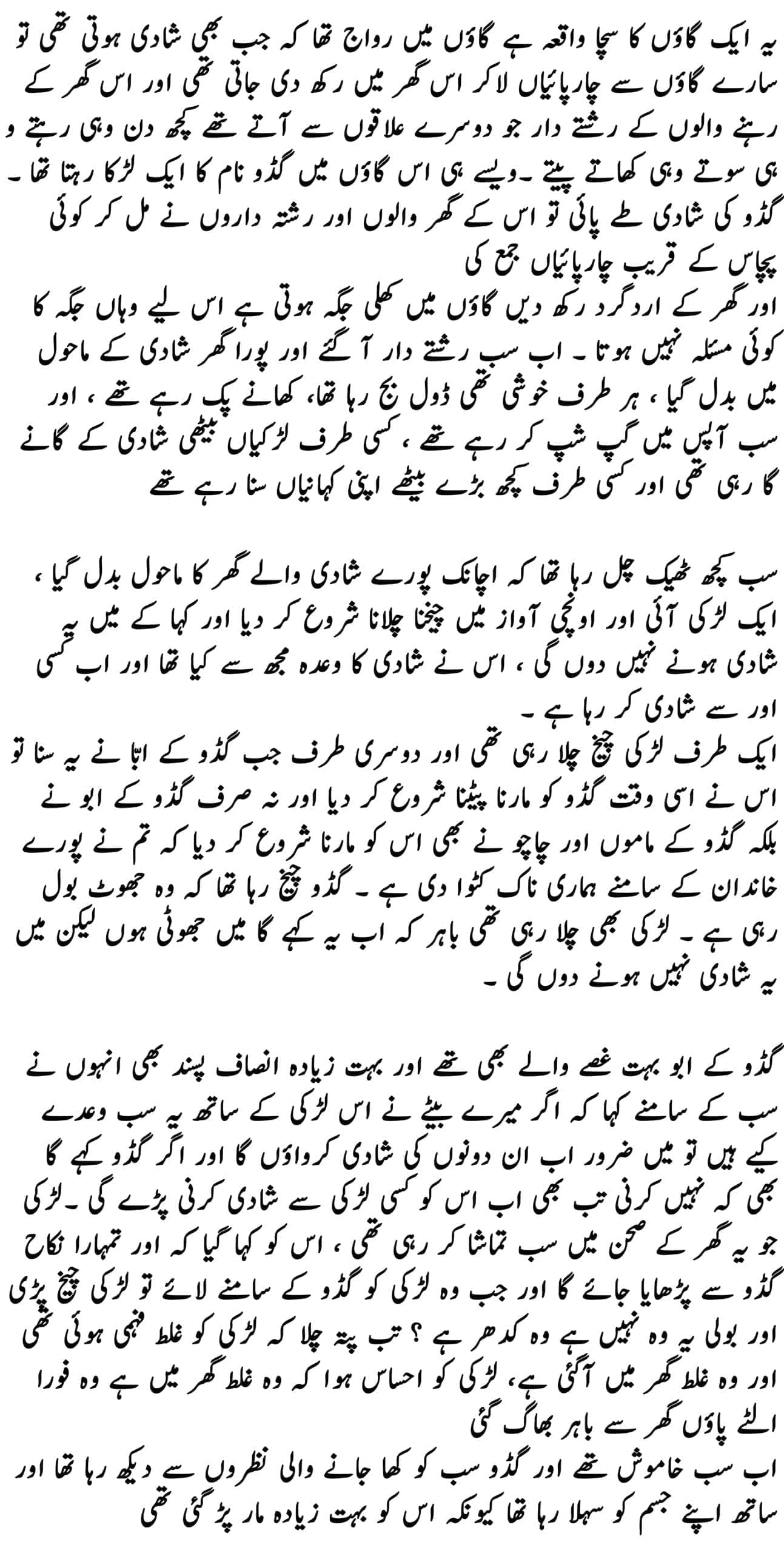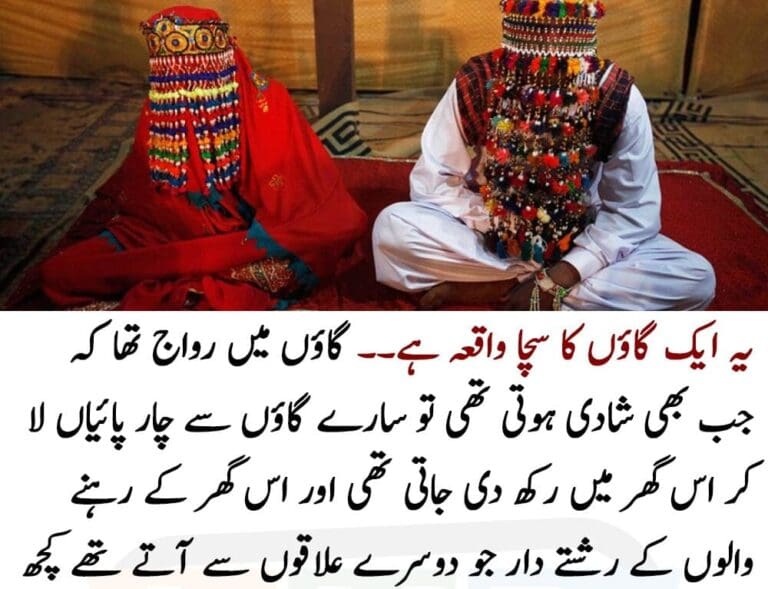In a quaint village, a peculiar tradition was followed during weddings. It was customary for four wooden sandals to be collected from every household in the village and placed in the home where the wedding was taking place. The relatives and guests from different regions who attended the wedding would stay at this house, sharing meals and living together for the duration of the festivities.
READ IN URDU BELOW

This tradition had been upheld for years, bringing the community together in a harmonious celebration of love and union. However, a twist in fate awaited the village when Gudu, a young man known for his mischievous nature, was to be married.
As soon as Gudu’s wedding was confirmed, his family and relatives gathered, and four wooden sandals were collected from each household to adorn their home. The village square buzzed with activity as preparations for the grand celebration were underway. The air was filled with the aroma of delicious food being cooked, and the beats of drums and the joyous laughter of the villagers echoed through the narrow lanes.
The wedding day arrived, and the village was transformed into a lively carnival. Drums played, dishes clinked, and laughter reverberated in every corner. The scene was set for a joyous union, and everyone eagerly awaited the arrival of the bride.
However, the atmosphere suddenly took an unexpected turn when a high-pitched voice pierced through the celebratory sounds. A young lady had entered, vehemently declaring that she would not allow the wedding to proceed. She asserted that Gudu had promised to marry her and was now marrying someone else.
On one side, the distressed girl was shouting her heart out, and on the other side, when Gudu’s father heard this, he immediately started berating Gudu. Not only him, but Gudu’s uncles and cousins also joined in, unleashing a barrage of blows upon the young groom. They were furious, feeling that Gudu had disgraced the entire family in front of the entire village.
Gudu was screaming that the accusations were false, but amidst the chaos, no one was ready to listen. The young lady, fueled by anger and hurt, continued her protest, declaring that she wouldn’t allow this marriage to take place.
In the midst of the tumult, Gudu’s father made a rash decision. He declared that if his son had made promises to this girl, they would indeed get married, and if Gudu refused, he would be forced to marry another girl. The village square fell silent, and all eyes were on Gudu, who was battered and bruised.
The distressed girl, still unaware of the misunderstanding, was shouting for Gudu to fulfill his promise. Gudu, unable to explain amidst the chaos, found himself being dragged to meet the girl. As they brought her in front of him, the girl let out a scream—it was not Gudu.
In the confusion, the wrong house had been identified as Gudu’s, and the distressed girl had entered the wedding of an entirely different family. The realization struck like a thunderbolt, and the village square transformed into a spectacle of embarrassment, regret, and apologies.
The young lady, who had unintentionally disrupted Gudu’s wedding, quickly understood the mix-up. In embarrassment, she turned on her heels and fled from the house, leaving the entire village in a state of bewilderment.
Gudu’s father, who had been the most vehement in his anger, now found himself apologizing profusely to his son. The uncles and cousins who had showered blows on Gudu were now feeling remorseful for their hasty actions. The wedding, which had turned into a chaotic affair, had left everyone stunned.
In the aftermath, the village learned a valuable lesson about the dangers of assumptions and hasty judgments. Gudu, though physically battered, emerged as the victim of an unfortunate misunderstanding. The distressed girl, now realizing her mistake, disappeared from the village, leaving behind a tale of confusion and embarrassment.
As the village returned to its normal pace, the incident of Gudu’s wedding became a cautionary tale. It was a reminder that assumptions could lead to irreversible consequences and that communication and understanding were paramount in avoiding such mishaps.
In the end, Gudu’s wedding did take place, but the grand celebration had been replaced by a subdued event. The village, having weathered a storm of misunderstandings, became more cautious about blindly following traditions and learned to validate information before jumping to conclusions.
The tale of Gudu’s wedding became folklore in the village—a story that was retold to generations as a reminder that in the dance of life, missteps could lead to unexpected twists, and it was crucial to tread carefully to avoid unnecessary chaos.



